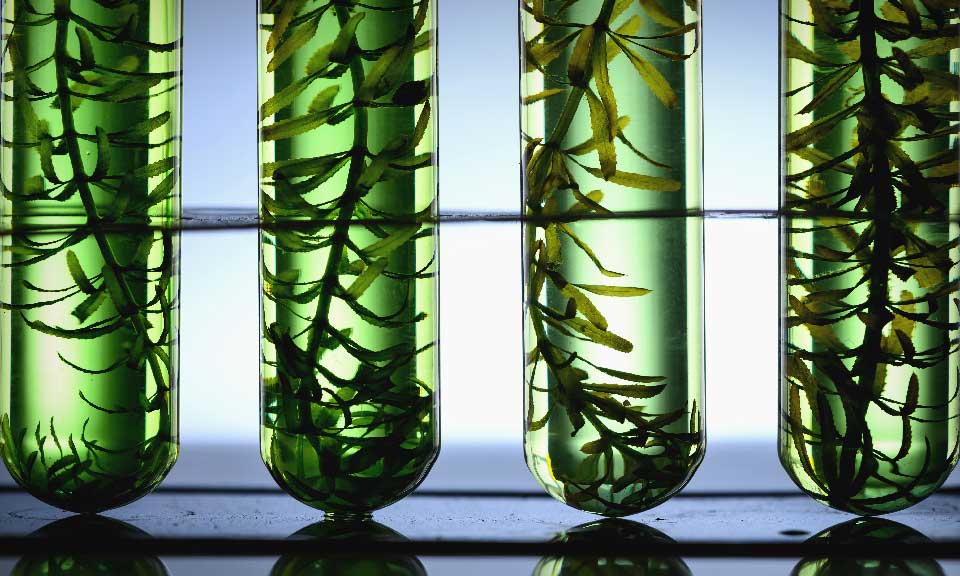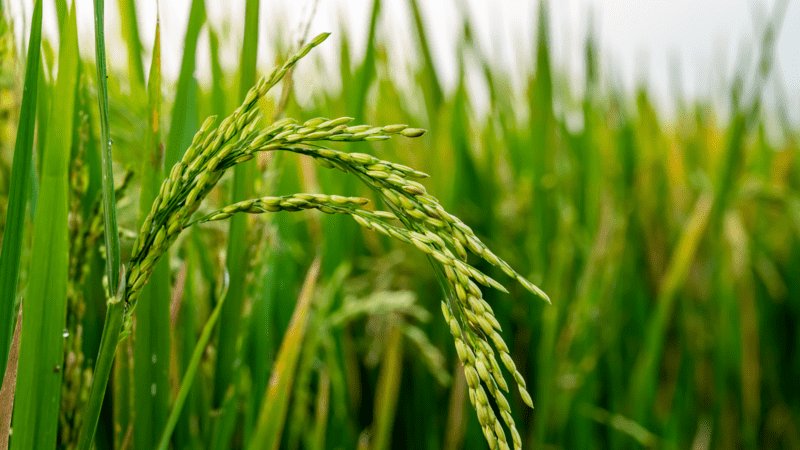Biofuels get boost from tax credits, infrastructure funding in surprise US Senate budget proposal

Biofuel producers who have at times felt overlooked in the wake of the Biden administration's push for vehicle electrification cheered incentives for low-carbon fuels included in a surprise climate investment deal reached by the US Congress.
The so-called Inflation Reduction Act of 2022, if passed, would make available $369 billion in energy security and climate change spending over the next decade. The legislation includes funding and key tax credits to boost biofuel production, as part of a deal unveiled late July 27 between Senator Joe Manchin, Democrat-West Virginia, and Senate Majority Leader Chuck Schumer of New York for a party-line budget reconciliation bill.
"At long last, we are pleased to see the new Senate bill on climate change, which recognizes the important role renewable fuels like ethanol can play in a lower-carbon future for this nation," Renewable Fuels Association President and CEO Geoff Cooper said in a statement.
The bill would make $500 million in grant funding available on a competitive basis for projects aimed at increasing the sale and use of biofuels through infrastructure improvements. Projects that aid with blending, storing, supplying or distributing fuels made from agricultural feedstocks would be eligible, with an eye on getting higher biofuel blends to market.
The grants would help cover the costs to install or upgrade fuel dispensers, storage tanks and related equipment needed to dispense higher blends of ethanol and biodiesel. They could also be put toward the construction or retrofitting of distribution systems for ethanol and biodiesel, according to the bill's text.
The legislation also extends the $1/gal tax credit for biodiesel, renewable diesel and alternative fuels through 2024 and creates a new tax incentive through 2024 for sustainable aviation fuel.
S&P Global Commodity Insights viewed the SAF tax credit as potentially helpful to closing SAF's price gap relative to renewable diesel.
S&P Global assessed US renewable diesel without credits at $3.31/gal July 28, compared with SAF without credits at $4.06/gal. The average price gap between the fuels in July was around 72 cents/gal, up from a June average of about 61 cents/gal.
The Biden administration in September 2021 announced an initiative to cut US aviation emissions by 20% by spurring production of 3 billion gal/year of SAF by 2030. The administration further set a target of meeting all US aviation fuel demand with SAF by 2050, requiring an estimated 35 billion gal/year of the low-carbon fuel.
The SAF credit in the Senate deal would be at $1.25/gal plus an additional 1 cent/gal for every percentage point by which the life cycle greenhouse gas emissions reduction of the fuel compared with petroleum-based jet fuel exceeds 50%, granting producers a maximum incentive of $1.75/gal.
Leading US bioenergy producers took issue with an earlier version of the SAF tax credit proposed in the draft Build Back Better Act, asserting that it relied on an outdated model for assessing lifecycle carbon emissions to determine program eligibility.
Specifically, they argued that that the bulk of the model developed by the International Civil Aviation Organization referenced in the legislation was seven to 15 years old and had not kept pace with innovation in biofuel production.
The new tax credit proposal for SAF would rely on the most recent carbon offsetting and reduction scheme for international aviation adopted by the ICAO or any similar methodology that satisfies certain Clean Air Act criteria.
The Renewable Fuels Association deemed the new lifecycle GHG methodology an improvement but still imperfect.
"Although the GREET model is still not explicitly mentioned for SAF under the provision, the language reverts to the House language and allows for both the ICAO methodology or a 'similar' methodology that meets the requirements of Clean Air Act Section 211," a spokesman said in an email.
After 2024, the Senate deal lays out a new clean fuel production credit for 2025 through 2027 that would apply to all low-carbon fuels, starting at 20 cents/gal for on-road transportation and 35 cents/gal for aviation.
On-road transportation fuels could receive up to a $1/gal credit while SAF would again be eligible for a maximum credit of $1.75/gal if certain labor requirements are met. Those amounts would be adjusted for inflation each year.
Under the bill, the Environmental Protection Agency would receive additional funds to carry out certain tasks tied to its annual obligation to determine the amount of renewable fuel that must be mixed with gasoline and diesel under the Renewable Fuel Standard program.
The bill sets $5 million aside for the EPA to develop tests and protocols to gauge the environmental and public health effects of fuels and fuel additives, perform analyses to regularly update regulations and guidance for determining a fuel's lifecycle GHG emissions and to evaluate the impacts of transportation fuels on low-income and disadvantaged communities.
Another $10 million would be allocated to the EPA for new grants to industry players and related activities to support investments in advanced biofuels.
"For the US to meet its climate goals, we must quickly expand the volume of low-carbon biofuels available across the entire transportation sector – on the ground, in the air, and at sea," Growth Energy CEO Emily Skor said. "These provisions can jumpstart that climate progress, while delivering more savings at the pump, greater long-term energy security, and a welcome economic boon to rural communities."

News
India's wheat stocks in state-run inventories depleted to a 16-year low as the central government sold record quantities to augment domestic supplies and rein in rising prices amid poor crop yields during two previous seasons. Wheat stocks in government warehouses were at 7.5 million mt at the start of April, down from 8.4 million mt a year ago, an official at the Food Corporation of India told S&P Global Commodity Insights. Over the past decade, wheat stocks on April 1 averaged 16.7 million mt. Despite the sharp fall in stocks, the government was able to meet the buffer and strategic reserve norms that mandate holding wheat stocks at or above 7.46 million mt April 1. The government has planned to aggressively acquire wheat to replenish its stocks at state-run warehouses. The government plans to procure around 33.5 million mt wheat produced in marketing year 2024-25 (April-March), nearly 28% higher than the actual procurement of 26.2 million mt a year prior. India could not reach its wheat procurement target in MY 2022-23 and MY 2023-24, as heat waves weighed on the crop size. However, the pace of procurement has slowed over the past week as recent showers in key wheat producing states have delayed harvest operations, traders said. The government has pegged India's wheat output in crop year 2023-24 (July-June) at 112 million mt, slightly higher than the 110.55 million mt harvested in the previous season. However, an S&P Global Commodity Insights survey of 13 analysts and traders found India's wheat harvest in MY 2023-24 is likely slightly lower year on year, at 107 million-108 million mt. Recently, it has ordered mandatory declaration of wheat stocks available with traders, private warehouses, retailers and processors on a government-managed portal effective April 1 and every Friday thereafter, in a bid to ensure availability and prevent hoarding. Record sales The country has delved into state reserves to sell wheat to bulk consumers, as millers to try to curb domestic prices that have been above the state-fixed minimum buying price since the last crop was harvested. India has also provided repeated extensions to the scheme of distribution of free food grains to over 810 million beneficiaries under the Pradhan Mantri Garib Kalyan Anna Yojana for five years effective Jan. 1, 2024, has dampened the prospects for wheat and non-basmati rice exports in 2024. The move is aimed at ensuring food security to the beneficiaries, according to a government statement. The scheme, which was set to end this December, has been extended amid ongoing state assembly polls and upcoming general elections next year. However, if the government misses its procurement target, it may have to look for cheap imports or reduce import duty on the grain to ensure adequate domestic supplies. Despite the tight supply, it has been resisting calls to reduce or remove the 40% import duty on wheat. The government is also likely to extend export restrictions on wheat until March 2025. India banned wheat exports in May 2022, after domestic supplies tightened amid a drop in output. In marketing year 2022-23 (April-March), India planned to export nearly 10 million mt of wheat but ended up shipping nearly 5 million mt. Geopolitical tensions Benchmark grain, oilseed and vegetable oil futures rose overnight in the US and during morning trade in Asia April 19, reversing a bearish streak, after Israel launched a retaliatory missile attack on Iran, fueling fears of an escalating conflict in the Middle East. Any potential supply bottlenecks may spur a rise in export prices of wheat from Black Sea origin, traders said. The most active July soft red winter wheat contract on the Chicago Board of Trade rose 2.6% from the previous close to $5.675/bushel at 0320 GMT. As of 1640 GMT, the contract was trading at $5.62/bushel, up 1.67% from the previous close. In the EU, the Euronext milling wheat contract for May was up 0.4% from the previous close at Eur206.50/mt ($219.88) as of 1640 GMT. Platts, part of S&P Global Commodity Insights, assessed EU 11.5% wheat FOB CVB at $213.25/mt April 18, up $1/mt on the day.

News
Bayer AG has announced the pilot of an expert generative AI (GenAI) system that “quickly and accurately” answers questions related to agronomy, farm management and Bayer agricultural products. The pilot has been developed in collaboration with Microsoft as leading technology partner and Ernst & Young (EY) as an industry partner, the company said. The system is the result of Bayer using proprietary agronomic data to train a large language model (LLM) with years of internal data, insights from thousands of trials within its vast testing network and centuries of aggregated experience from Bayer agronomists around the world, the company said. “Our unique GenAI system has the potential to serve agronomists and benefit farmers all over the world, further advancing AI as an indispensable technology for agriculture,” said Amanda McClerren, CIO and head of digital transformation & information technology for Bayer’s crop science division. Bayer said it is exploring ways to integrate the expert GenAI system into its digital offerings, and the company anticipates broad opportunities for collaboration with other agricultural offerings and partners. “Bayer aims to expand the pilot of the expert GenAI system to selected agronomists and potentially farmers as early as this year, while continuing to advance a separate GenAI prototype allowing users to directly query their own farm data,” the company said. In addition, the partnership between Bayer and Microsoft enables the company to bring ready-made capabilities, AgPowered Services, to the agri-food industry, such as Bayer’s Historical Weather that brings a comprehensive weather dataset to Azure Data Manager for Agriculture that spans the last 40 years and provides detailed, field-level weather insights across global agricultural regions, the company said. Integrating tools from IBM, including from the IBM Environmental Intelligence Suite, the new capability, which was previously available for internal use only, can inform weather risk assessments and actuary processes, Bayer said. It will also be used by Bayer and others to forecast crop seasonality and production changes year over year, as well as train agronomic models, it said. Meanwhile, Bayer is developing a connector that enables access to irrigation data from Lindsay Corp., an industry-leading irrigation solution provider. This expands the data types available to Azure Data Manager's enterprise customers, making it possible for them to connect to irrigation data in the same way as weather, imagery, original equipment manufacturer (OEM) and other data types, the company said. The new cloud offerings will also support regulatory and sustainability reporting, such as providing supply chain traceability that can help ensure compliance with new laws such as the EU Deforestation Regulation, which is expected to go into effect at the end of 2024, Bayer said. This article was first published in chemweek.com. Photo credit: Bayer

News
Asia has seen the fastest growth in biofuels production and exports globally, driven by government policies and export markets for feedstocks. To capitalize on the boom, governments have rapidly pushed out biofuel mandates focused around their country’s main agricultural products. Presently, the largest biofuel producers in the region are China, India, Indonesia, Malaysia, the Philippines and Thailand. Here’s a ready reckoner for Asia’s major biofuel policies along with production, trade and prices. Click for the full-size infographic